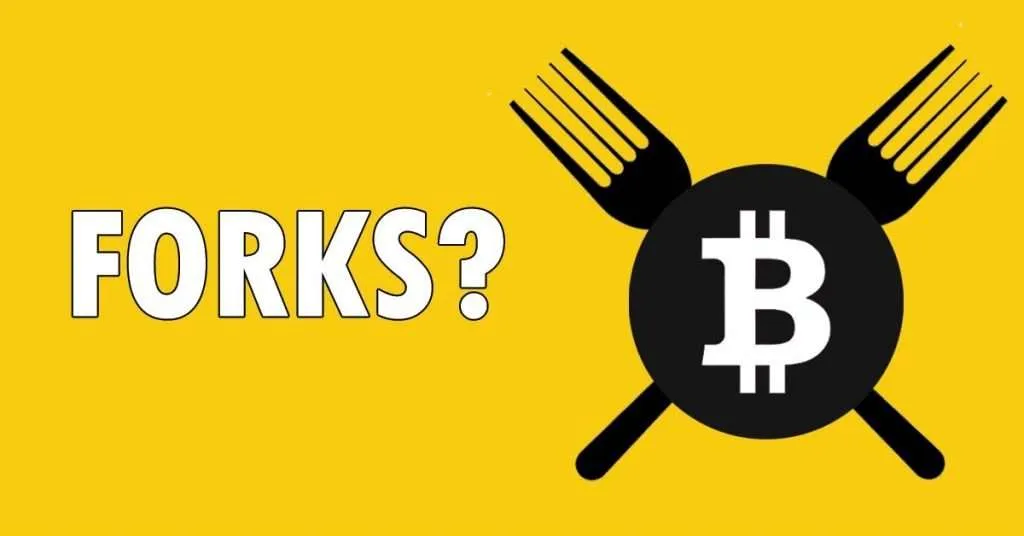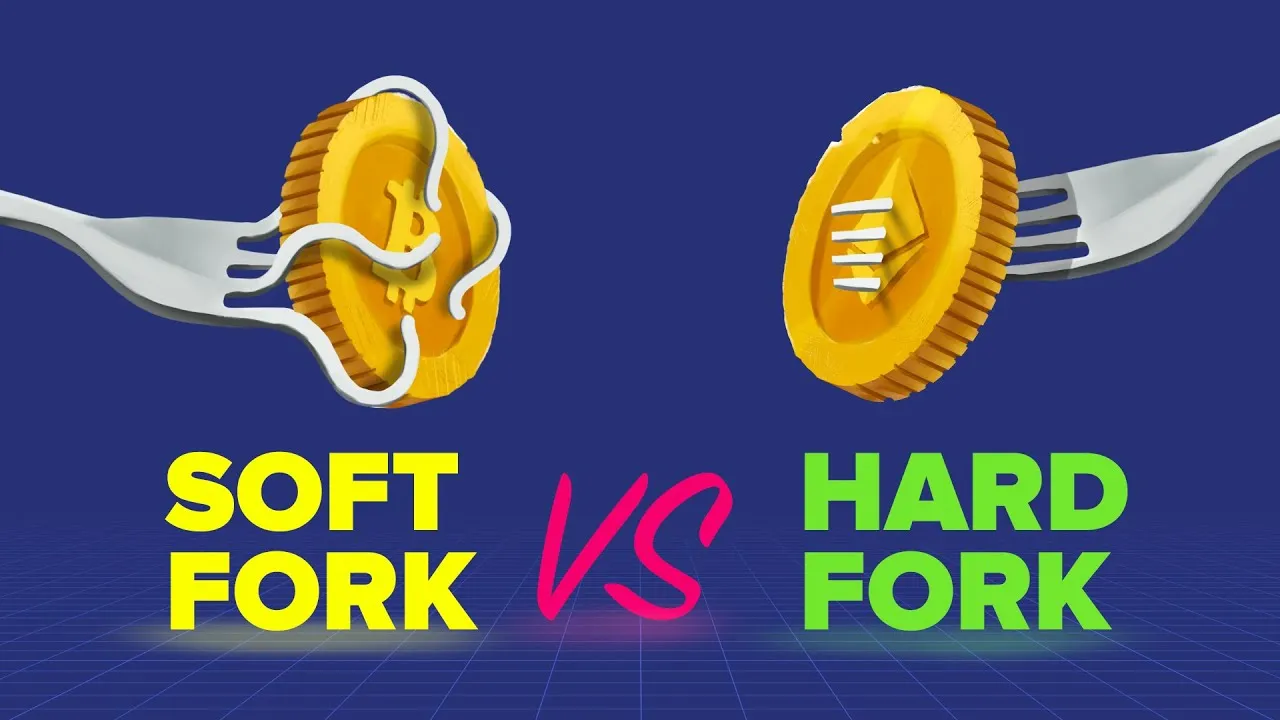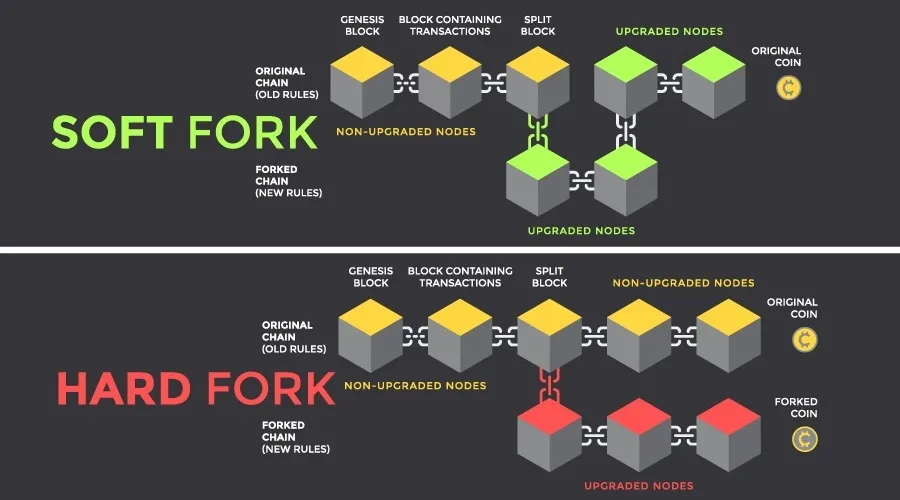


FORK
July 25, 2024
In the name of God
Forks, Hard Forks, and Soft Forks
Blockchain technology has revolutionized various industries by introducing decentralized and transparent systems. A fundamental concept within the blockchain ecosystem is a “fork,” which refers to a split in the blockchain’s transaction history. Forks can occur for various reasons and can be classified into two main types: hard forks and soft forks. In this article, we will delve into the intricacies of forks, their types, and their implications in the blockchain realm.

_ Forks in Blockchain Technology:
A fork, in the context of blockchain technology, is a divergence in the blockchain’s transaction history, resulting in two separate paths moving forward. It occurs when there is a disagreement among the network participants regarding the rules governing the blockchain. Forks can lead to the creation of a new blockchain with distinct features and characteristics. They can be intentional, as in the case of planned upgrades, or accidental due to software bugs or network disruptions.
- Hard Forks:
A hard fork is a type of fork that involves a substantial and irreversible divergence in the blockchain. It requires all participants to upgrade to the new version of the blockchain software. In a hard fork, the changes to the protocol are not backward-compatible, meaning that nodes running the previous version will not recognize the new blocks, resulting in a permanent split.
- Purpose of Hard Forks:
Hard forks are often implemented to introduce significant changes to the blockchain network, such as modifying the consensus mechanism, altering the block size, or adding new features. These changes are typically driven by a desire to improve scalability, security, or functionality. Hard forks provide an opportunity for developers to implement radical upgrades and experiment with innovative ideas.
- Impact of Hard Forks:
- Creation of a New Blockchain: During a hard fork, a new blockchain is created, which is incompatible with the previous version. Each network participant must choose which chain to follow, leading to a divergence in the transaction history.
- Community Divisions: Hard forks can result in community divisions, as participants with differing opinions on the proposed changes may support different chains. These divisions can lead to the creation of new communities with distinct visions and goals.
- Token Split: In many hard forks, the existing cryptocurrency is duplicated, resulting in a new cryptocurrency being created on the newly forked chain. Holders of the original cryptocurrency usually receive an equal amount of the new cryptocurrency, providing an opportunity for value creation.
- Soft Forks:
Unlike hard forks, soft forks are backward-compatible upgrades to the blockchain protocol. In a soft fork, the new rules introduced are more restrictive than the previous ones, making all previously valid blocks and transactions still valid according to the upgraded protocol.
- Purpose of Soft Forks:
Soft forks are typically implemented to introduce minor changes or improvements to the blockchain network. They are designed to be compatible with the previous protocol, ensuring that nodes running the older software can still participate in the network.
- Impact of Soft Forks:
- Consensus Rule Changes: Soft forks modify the consensus rules, imposing new restrictions on block validation. Nodes that have not upgraded to the new protocol will still recognize the new blocks as valid, as they conform to the previously defined rules.
- Network Uniformity: Unlike hard forks, soft forks do not result in a split in the blockchain. The network remains unified, with all participants following the upgraded protocol. However, non-upgraded nodes may not be able to take advantage of the new features or improvements introduced by the soft fork.

_ Examples of Forks :
Here are a few notable examples of forks in the blockchain space:
- Bitcoin Cash (BCH):
Bitcoin Cash is one of the most well-known and significant hard forks of Bitcoin (BTC). It was created in August 2017 as a result of a disagreement within the Bitcoin community regarding the scalability of the Bitcoin network. Bitcoin Cash increased the block size limit from 1MB to 8MB, enabling faster and cheaper transactions. The fork resulted in the creation of a new blockchain and a separate cryptocurrency, Bitcoin Cash (BCH), with its own community and development roadmap.
- Ethereum Classic (ETC):
Ethereum Classic emerged as a result of a hard fork in the Ethereum network in July 2016. The fork was a response to a high-profile hack that exploited a vulnerability in a popular smart contract called The DAO (Decentralized Autonomous Organization). The Ethereum community disagreed on whether to roll back the transactions and reverse the hack, leading to a split. Ethereum Classic continued the original Ethereum blockchain, while Ethereum (ETH) followed the forked chain with the transactions rolled back. Ethereum Classic maintains a separate development community and has its own native cryptocurrency, ETC.
- Bitcoin SV (BSV):
Bitcoin SV is a hard fork of Bitcoin Cash that occurred in November 2018. The fork was a result of a contentious disagreement within the Bitcoin Cash community over the future direction of the protocol. Bitcoin SV, which stands for “Satoshi Vision,” aimed to preserve what its proponents considered the original vision of Bitcoin as outlined by Satoshi Nakamoto. Bitcoin SV increased the block size limit even further, reaching 128MB, with the goal of enabling greater scalability and supporting more transactions on the blockchain.
- SegWit (Bitcoin):
Segregated Witness, commonly known as SegWit, was a soft fork implemented in the Bitcoin network in August 2017. SegWit aimed to address the scalability and transaction malleability issues in Bitcoin by changing the way transaction data was stored in blocks. It introduced a new transaction format that separated signature data from the transaction data, allowing for more efficient use of block space. SegWit was a backward-compatible upgrade, meaning that nodes running older versions of the Bitcoin software could still recognize and process the new blocks.

Forks are an integral part of the blockchain ecosystem, enabling the evolution and improvement of decentralized networks. Hard forks and soft forks represent two distinct types of forks with different implications. Hard forks result in a permanent split, creating new blockchains and communities, while soft forks introduce backward-compatible upgrades to the existing network.Understanding the differences between hard forks and soft forks is crucial for blockchain enthusiasts, developers, and participants. By staying informed about these concepts, individuals can better navigate the ever-changing landscape of blockchain technology and appreciate the innovative potential it offers.















